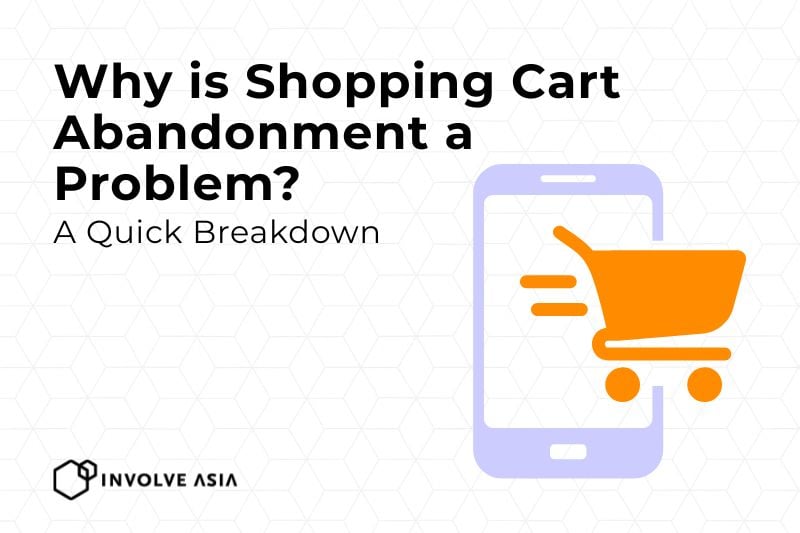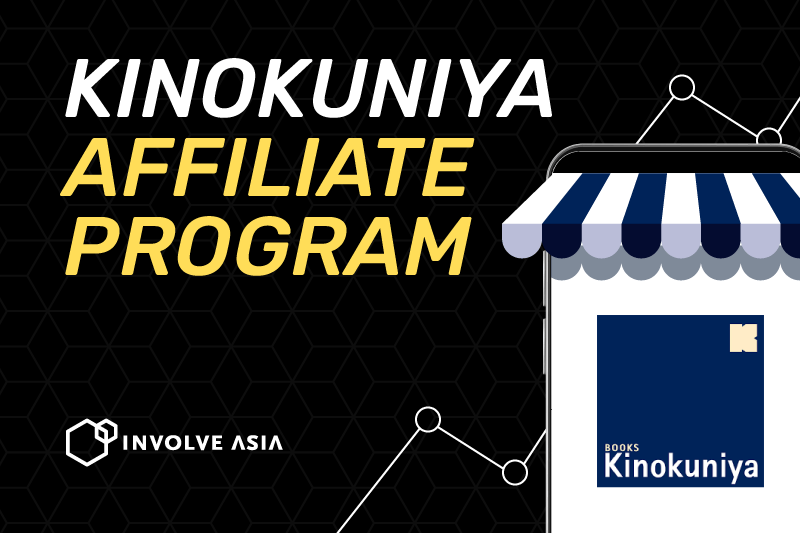Picture this. You walk into a store, find something you love, and even carry it around for a bit… but when it’s time to buy, you just walk out the door.
That’s exactly what happens online every single day—and it’s called shopping cart abandonment.
It’s more common than you think—and if you’re running an online business, it’s quietly eating into your sales, marketing budget, and growth potential.
Let’s break down why is shopping cart abandonment a problem (and what you can do to fix it).
What Is Shopping Cart Abandonment?
A Quick Definition
Simply put, cart abandonment is when a shopper adds items to their cart but leaves the website without completing the purchase.
It’s like having full shopping carts littering your checkout lanes—except online, you can’t physically see them.
How It Happens
Abandonment can happen for dozens of reasons: second thoughts, distractions, sticker shock, complicated checkout—you name it. Understanding the “why” is the first step toward solving it.
Read: 4 reasons why people abandon their online shopping carts
Why Does Shopping Cart Abandonment Matter?
Lost Revenue
Every abandoned cart is money left on the table. If your cart abandonment rate is 70%, that’s 7 out of 10 shoppers walking away without buying.
Wasted Ad Spend
You paid to get them there—through Google Ads, Facebook campaigns, influencer marketing, or SEO.
When visitors leave without buying, it makes your customer acquisition cost skyrocket.
Lower Customer Lifetime Value
Without that first purchase, there’s no repeat purchases. This will hurt your ability to build loyal, high-value customers over time.
Missed Growth Opportunities
Abandoned carts don’t just hurt today’s numbers—they slow down your brand’s momentum for future launches, loyalty programs, and revenue targets.
Read: Understanding Shopping Cart Abandonment Rate Formula
5 Common Reasons for Cart Abandonment
Unexpected Costs
Nobody likes surprise fees at checkout. Extra shipping, taxes, or processing fees scare shoppers away fast.
Complicated Checkout Processes
Long forms, confusing navigation, or too many steps can frustrate shoppers enough to make them quit.
Security Concerns
If your checkout page looks sketchy—or if you’re missing trust badges—customers may not feel comfortable entering their card details.
Forced Account Creation
Some shoppers just want to buy quickly. If you make them sign up for an account, they might abandon the cart altogether.
Lack of Payment Options
If you don’t offer their preferred payment method (like e-wallets, Buy Now Pay Later, etc.), shoppers will likely go somewhere else.
3 Ways Cart Abandonment Impacts Your Business Metrics
Conversion Rate
High cart abandonment drags down your overall site conversion rate, making your marketing efforts look less effective.
Customer Acquisition Costs
It costs more to bring in new visitors—and when those visitors leave without buying, your costs per customer skyrocket.
Return on Ad Spend (ROAS)
Every dollar you spend driving traffic loses value if those shoppers never complete checkout. A high abandonment rate wrecks your ROAS.
The Psychological Side of Cart Abandonment
Buyer’s Remorse (Before Buying!)
Sometimes shoppers get excited but then second-guess their decision—especially if they’re hit with unexpected costs or lengthy checkout processes.
Analysis Paralysis
Too many choices, confusing offers, or lack of urgency can freeze a shopper into indecision—and eventual abandonment.
How to Identify Cart Abandonment Problems Early
Key Metrics to Watch
- Cart Abandonment Rate
- Checkout Abandonment Rate
- Time Spent on Checkout Page
- Bounce Rate from Payment Page
Tools That Can Help
- Google Analytics (Goals & Funnels)
- Heatmap Tools like Hotjar
- E-commerce platform reports (Shopify, WooCommerce, etc.)
Data will show you exactly where people drop off—and where you can intervene.
3 Ways to Fix Shopping Cart Abandonment
Streamline Your Checkout Process
Make it as fast and frictionless as possible. Less typing, fewer screens, and clearer instructions = more completed purchases.
Build Trust with Shoppers
Add visible security badges, transparent return policies, and social proof (like reviews) to reassure nervous buyers.
Remind Them to Complete Purchase
Sometimes shoppers just need a nudge. Use email reminders, targeted ads, or even limited-time discounts to bring them back.
How Conversion Booster Can Help
Even the best checkout flow can’t prevent all abandonment. Some shoppers will always leave—because life gets in the way.
That’s why smart brands use Conversion Booster.
✅ Stay visible to shoppers after they leave
✅ Remind them of what they loved
✅ Bring them back across platforms like Google search, websites and apps
✅ Only pay when conversions actually happen
👉 Get started with Conversion Booster now—and start turning lost carts into real sales.
Conclusion
Shopping cart abandonment isn’t just a small leak in your sales funnel—it’s a full-blown flood if left unchecked.
But the good news? With the right strategies—and the right tools—you can recover lost sales, lower your acquisition costs, and grow your revenue faster.
You worked hard to get those website visitors. Now let’s make sure you turn them into customers.
Frequently Asked Questions (FAQs)
Why is cart abandonment bad?
Cart abandonment is bad for businesses because it means potential sales are being lost at the final step. When a customer adds products to their cart but leaves without completing the purchase, it impacts revenue, skews marketing metrics, and wastes advertising spend. It’s especially frustrating because these users showed clear purchase intent.
High abandonment rates can also indicate poor user experience, slow loading times, or lack of trust at checkout. If left unaddressed, businesses risk losing loyal customers and damaging conversion rates over time. Reducing cart abandonment is key to improving overall eCommerce profitability and getting the most out of your marketing efforts. Optimizing the checkout process, offering guest checkout, and sending cart reminders are proven ways to recover lost sales.
Why are shopping carts abandoned?
Shopping carts are abandoned for several reasons—most commonly due to unexpected costs like shipping fees, complicated checkout processes, or the requirement to create an account. Sometimes users are simply browsing or comparing prices, while others get distracted or decide to wait before buying. Mobile users, in particular, tend to abandon carts if the site isn’t mobile-friendly or loads too slowly.
Lack of trust in payment security or limited payment options also drives people away. Understanding these reasons is crucial for businesses to improve their online store performance. By streamlining the checkout experience, offering transparent pricing, and sending cart reminder emails, you can reduce cart abandonment and increase conversions. Tools like affiliate retargeting can also bring users back and turn abandoned carts into sales.
What is cart abandonment?
Cart abandonment happens when an online shopper adds products to their shopping cart but leaves the website without completing the purchase. It’s a common challenge in eCommerce and directly affects conversion rates and revenue. While users may be interested in the product, many exit due to unexpected costs, confusing checkout steps, or slow-loading pages.
Cart abandonment is often measured as a percentage and is a key metric for understanding how well your website converts visitors into paying customers. Reducing cart abandonment can significantly boost sales without increasing traffic. Tactics like email reminders, simplified checkouts, and offering incentives such as discounts or free shipping can help recover lost revenue and improve customer satisfaction. It’s a vital area of focus for any online business looking to maximize return on investment (ROI).
Why is lazy cart syndrome bad?
Lazy cart syndrome refers to customers who add items to their shopping cart without real intent to buy—often using it as a wish list or to compare prices. This behavior may seem harmless, but it inflates cart abandonment rates, skews performance metrics, and makes it harder for businesses to gauge real buyer interest. It can also lead to underperforming retargeting campaigns, as marketers may waste resources trying to re-engage low-intent users.
Over time, this reduces marketing efficiency and affects profitability. Addressing lazy cart syndrome involves improving the checkout experience, using urgency tactics like limited-time offers, and educating customers with clear value propositions. By understanding and minimizing lazy cart behavior, businesses can boost their conversion rates and focus marketing efforts on more serious buyers, ultimately improving eCommerce results.







